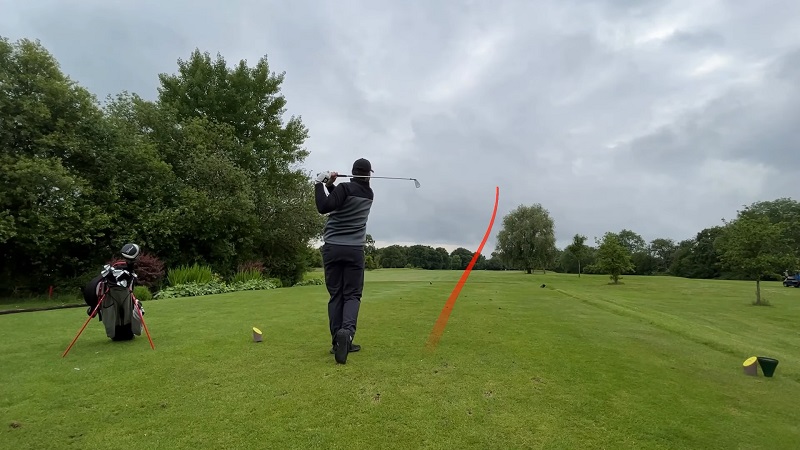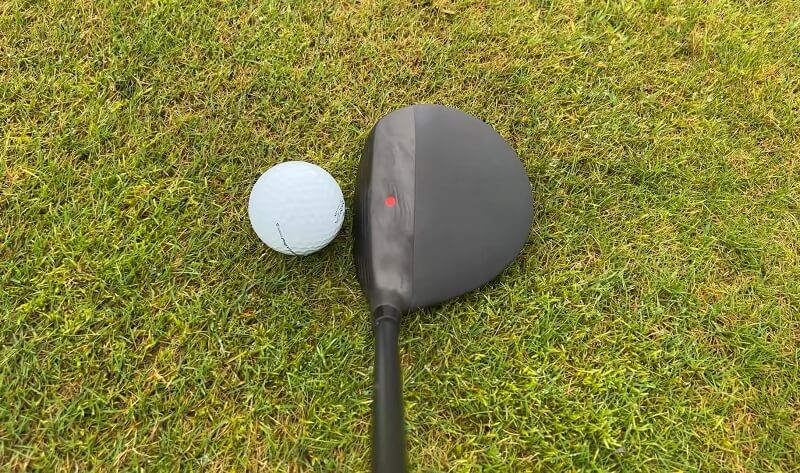Golf is a sport that requires skill, practice, and patience to master. And how to play golf better? This is a question that is always on the mind of serious golfers. Whether you’re just starting or looking to take your game up a notch, there are many ways to improve your golf skills.
From mastering the swing basics to learning tips and tricks from experienced players, these 10 tips will help you become a better golfer in no time. You’ll learn about why each technique works, as well as how it can help improve your overall game. So get ready for some great improvement on the links!
Tip 1: Perfect Grip
Right Grip Size
Selecting the right grip size is of utmost importance. The grip is the only point of contact between your hands and the club, so finding one that fits comfortably and provides the necessary support is crucial. If your grip is too small or large, you’ll have trouble maintaining proper wrist action during your swing, affecting the accuracy and distance of your shots.
It’s essential to take the time to get fitted for the right grip size, as it can make a significant difference in your game. A professional fitting can help you find a grip that will allow you to control the club and make consistent, powerful shots. Don’t overlook the importance of the grip size in your golf game – it could be the difference between a birdie and a bogey.
Even Pressure
When holding the golf club, apply even pressure with both hands. Gripping the club too tightly can result in restricted wrist movement, resulting in reduced swing speed and a loss of control. Therefore, players must understand the significance of correctly placing their hands on the golf club.
Adopting the correct grip pressure is fundamental to every golfer’s game and can significantly improve accuracy and distance. Golfers who need proper hand placement and pressure may need help to achieve the outcomes they desire.
Proper Thumb Placement
Proper thumb placement is often overlooked, but it is essential to achieving a successful golf swing. Positioning your thumbs correctly on the grip can make a significant difference in your clubhead speed and the overall control you have over the club. To achieve maximum speed, make sure your thumbs point straight down the club shaft. This allows for a proper wrist hinge and helps you better control the club’s movement throughout your swing. Don’t underestimate the importance of proper thumb placement – it is the small detail that takes your golf game to the next level.
Tip 2: Proper Stance

Feet Position
Maintaining balance throughout your swing is crucial for achieving optimal results on the golf course. You can establish a solid foundation for your swing by positioning your feet shoulder-width apart. Keeping your feet slightly flared outward adds an extra layer of stability to your stance, allowing you to focus on your swing and perfect your shot.
Weight Distribution
Proper weight distribution is a fundamental aspect of any successful golf swing. By distributing your weight evenly between your feet, you establish a solid foundation from which to generate power and accuracy. During your backswing, it’s essential to favor your back foot slightly to maintain stability and prevent over-rotation. As you transition into the downswing, you want to shift your weight towards your front foot, which helps initiate the forward movement of the club head. With practiced weight distribution, you’ll be able to create a smooth and powerful swing that consistently produces excellent results on the course.
Proper Alignment
Align your feet, hips, and shoulders parallel to the target line. This will ensure a straight and accurate shot.
Tip 3: Improve Swing
Swing Basics
Maintaining a smooth, fluid motion throughout your swing is the key to success. Focusing on tempo and rhythm rather than trying to hit the ball as hard as possible can help you achieve the right balance and control over your swings. Practicing these fundamentals regularly can help you develop a consistent swing that can enhance your overall game. Consider taking lessons from a professional golf instructor who can provide guidance and helpful tips on improving your swing.
Perfecting Backswing
During the backswing, rotate your hips and shoulders away from the target. This movement creates the torque needed for a strong downswing. Remember that it’s not just about the motion itself but also the timing of it. Ensure you’re not rushing through the backswing and sacrificing the proper rotation.
The Downswing
The downswing is a crucial part of any golfer’s swing. To execute it properly, you must start by shifting your weight towards your front foot and rotating your hips towards the target. This action generates power and accuracy, giving your swing the necessary momentum to drive the ball deep down the fairway. It takes practice and patience to perfect your downswing, but with the right technique and dedication, you can take your golf game to the next level. Remember to keep your movements fluid and controlled, and let the momentum drive your swing forward.
Tip 4: Putting Techniques

Reading Greens
Reading greens can significantly improve your chances of a successful putt. Before making your move, it’s essential to analyze the terrain carefully. It would help if you considered the breaks, slopes, and other factors that could impact the ball’s path. By doing so, you can determine the speed and direction of your putt with greater accuracy. Taking the time to read the greens could make all the difference between an incredible score and a mediocre one. Next time you hit the green, prioritize reading the terrain and watch as your putting improves.
Putter Grip
Finding the right putter grip can mean the difference between sinking a putt or missing the mark. It’s important to ensure that the grip you choose is comfortable and allows for a smooth and controlled stroke. Experimenting with different styles can help you find the grip that works best for your swing and body type. The right grip can give you the confidence you need to step up to the ball and easily make your shot. So, take the time to find the perfect putter grip and watch your game improve.
The Stroke
Keep your putting stroke smooth and steady, with minimal wrist movement. Focus on striking the ball with a consistent tempo and follow-through.
Tip 5: Chipping Techniques
Club Selection
One of the key decisions in executing a successful chip shot is selecting the proper club. To make this decision, consider both the distance to the hole and the ball’s lie. Different clubs create different outcomes – a higher-lofted club will produce a higher, softer shot with increased backspin, while a lower-lofted club will tend to produce a more direct, rolling shot. As a general rule of thumb, consider using a wedge or sand wedge when you’re closer to the green, while an 8-iron, 9-iron, or pitching wedge can be more appropriate for middle distances. Remember to consider the type of grass you’re playing on, as different types of lies can also impact your club selection.
Address Position
A fundamental element of mastering chipping techniques is getting the right address position. It might seem insignificant, but how you set up before taking the shot can make a huge difference in the outcome. To nail it, stand with your feet close together and slightly lean forward to distribute your weight on the front foot. This position will provide you with stability and the necessary balance to hit the ball cleanly.
Weight Distribution
Mastering proper chipping techniques can make all the difference in your short game. Regarding weight distribution, keeping most of your weight on your front foot during the entire shot is crucial. This not only helps prevent fat shots, but it also ensures that you make solid contact with the ball and achieve a consistent launch angle each time. Maintaining proper weight distribution, you can finesse the ball closer to the hole and make your chip shots count on the green.
Tip 6: Mastering Bunker Shots
Proper Stance
One crucial element of a successful bunker shot has the proper stance. To achieve this, start by positioning your feet wider than shoulder-width apart and digging them into the sand for stability. It’s also crucial to have your weight slightly forward, and your knees flexed. You can confidently approach any bunker shot easily and skillfully by mastering the proper stance.
Club Selection
Choosing the right club can make a difference in your ability to get out of the sand easily. For bunker shots, using either a sand wedge or a lob wedge is recommended. These clubs have a wide, rounded sole that will help the club glide through the sand smoothly. Avoid using a pitching wedge or any other club with a thin sole, as these are more likely to dig into the sand, leading to unwanted mishits. Selecting the right club will make you one step closer to becoming a pro at bunker shots.
Follow-Through
Focus on a smooth, full follow-through to ensure that the clubhead maintains its speed through the sand and propels the ball out of the bunker.
Tip 7: Course Management

Plan Each Shot
Effective course management is all about strategy and precision. Planning each shot with utmost care and attention to detail is essential to achieve success on the green. With a keen eye, carefully consider factors such as wind direction, hazards, and course conditions, and make informed decisions based on the information. Doing so can avoid making costly mistakes and maximize your chances of achieving a favorable outcome. Remember, golf is as much a mental game as it is physical, so take the time to strategize and plan your shots accordingly.
Know Your Limits
Understand your own strengths and weaknesses, and choose shots that you can execute confidently. Trying to pull off shots beyond your skill level can lead to frustration and poor results.
Play Smart
Playing smart means not only relying on your skills and technique but also managing your emotions and thinking strategically throughout the round. Instead of always trying to hit the perfect shot, take a step back and make more conservative choices when necessary. On the other hand, if the situation calls for it, be prepared to take calculated risks that may pay off in the end.
Tip 8: Mental Game
Stay Focused
The mental game of golf is just as important as the physical one. One key aspect of it is staying focused throughout your round. With so many potential distractions, from noisy spectators to weather conditions, it can be challenging to maintain concentration. However, if you can stay present at the moment, you’ll be able to make better decisions and execute your shots more effectively.
Manage Expectations
Managing expectations is just as important as swing mechanics and technique. It’s easy to get caught up in the numbers and become fixated on achieving a certain score, but this can be detrimental to your mental game. Instead, set realistic goals for yourself and focus on the process of improving your skills. Remember that golf is a challenging game with ups and downs. Accepting this fact will allow you to approach the game with a balanced mindset, free from the pressure and anxiety of unattainable expectations. This way, you can play to your full potential and enjoy the game to the fullest extent.
Positive Attitude
Maintaining your composure when faced with difficult challenges or setbacks can be hard, but keeping a positive outlook is crucial. Not only will it improve your enjoyment of the game, but it will also help you stay focused and motivated. By practicing positivity, you’ll be able to approach each game with a clear mind and a can-do attitude.
Tip 9: Practice Routine

Effective Drills
Incorporate drills into your practice routine that target specific aspects of your game. This will help you make more focused improvements in your skills.
Consistency
Practice consistently to see the best results. Set aside dedicated time for practice each week and stick to your routine.
Time Management
It’s all too easy to fall into the trap of just practicing your favorite shots, but this can neglect crucial areas of your game. By dividing your practice time between driving, irons, short game, and putting, you’ll ensure that you’re working on all aspects of your game. This balanced approach will help you to develop a well-rounded skill set that can help you achieve your goals on the course.
Tip 10: Equipment Check
Choose the Right Club
Investing in custom-fitted clubs tailored to your skill level and playing style is a wise decision that can greatly improve your performance on the course. Custom-fitted clubs can help you hit the ball further, straighter, and more accurately. Additionally, having a properly fitted set of clubs can help prevent injuries and promote proper swing mechanics. So if you’re serious about improving your game, choose the right club for every shot and invest in custom-fitted equipment.
Golf Balls
Choosing the right set of golf balls can make all the difference in your performance on the course. When selecting golf balls, it’s important to consider various factors such as distance, spin, and feel. The right golf ball can enhance your game by giving you the right control and power when you need it most. So take some time to consider which golf balls will work best for your swing and style of play.
Golf Accessories
In addition to your clubs and balls, investing in high-quality golf accessories is equally important to help you ace your game. A rangefinder can help you accurately measure the distance to your targets, while golf gloves can provide you with better grip and control. Moreover, quality golf shoes can offer comfort, support, and stability, allowing you to stay focused and play your best.
Bonus Tips
Here are a few more tips to help you elevate your golf game:
Warm-Up Properly
Before hitting the course or practice range, take the time to warm up your body and loosen your muscles. This can help prevent injury and improve your performance.
Stay Hydrated
Golf can be a physically demanding sport, especially in warm weather. Make sure to drink plenty of water to stay hydrated and maintain peak performance.
Learn From Others
Observe and learn from more experienced golfers, whether it’s through in-person lessons, online tutorials, or simply watching golf tournaments on TV. This can help you pick up valuable tips and insights to apply to your own game.
Stay Flexible
Incorporate stretching and flexibility exercises into your daily routine. Improved flexibility can enhance your swing and help prevent injuries.
Track Your Progress
Keep track of your practice sessions, rounds, and scores. This will help you identify areas of your game that need improvement and measure your progress over time.
By applying these bonus tips, along with the 10 main tips covered earlier, you’ll be well on your way to improving your golf game and enjoying the sport even more. Remember, the key to success in golf is a combination of dedication, practice, and a positive mindset.
Conclusion
As a golfer, you know that the journey to improving your game is not an easy one. However, you can achieve your goals and become a better player with the right mindset and approach. These 10 tips will provide you with the framework to take your golfing prowess to the next level. As you work on honing your skills, it’s important to maintain a patient and positive attitude. Remember, progress takes time, but with dedication and hard work, you will see improvements in your game. Keep your eyes on the prize, and you’ll be amazed at how far you can go.
FAQs
How Can I Increase My Driving Distance?
Focus on improving your swing mechanics, club head speed, and flexibility. Also, consider getting custom-fitted clubs to maximize your distance potential.
What’s The Best Way To Lower My Golf Handicap?
Consistent practice, focusing on your short game, and smart course management are all key factors in lowering your handicap.
How Can I Improve My Golf Swing Consistency?
Work on maintaining a smooth tempo and proper swing mechanics. Regular practice and professional instruction can also improve consistency.
What Is The Best Way To Practice Putting?
Set aside time for putting practice, incorporating drills focusing on distance control, alignment, and reading greens.
How Important Is Course Management In Golf?
Course management is crucial in golf, as it helps you make strategic decisions and avoid costly mistakes, ultimately leading to lower scores.


